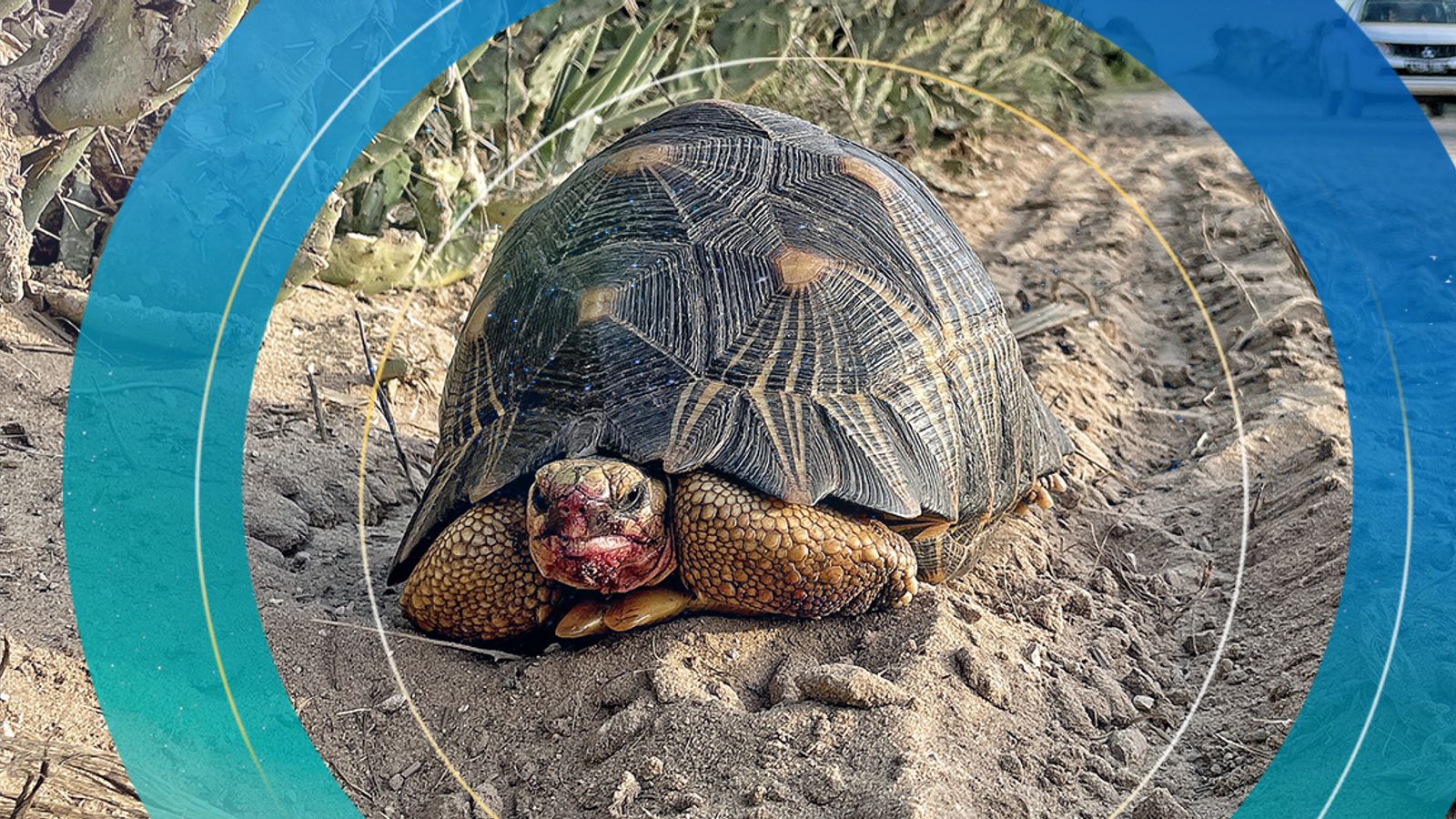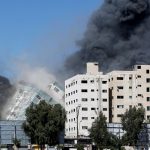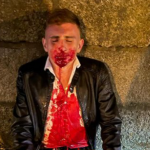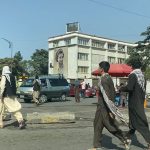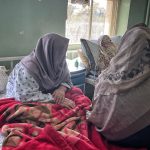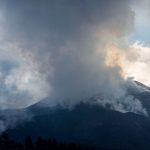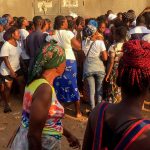The sight of an extremely rare radiated tortoise inching its way along the dusty curb of a road in southern Madagascar is emblematic of what the country is going through.
The creature, with its unusual high shield and distinctive yellow markings, is critically endangered.
It is disappearing at such a rate, conservationists warn it could be extinct in the wild within 20 years.
It very definitely shouldn’t be sighted, wandering about out in the open, exposed like this.
We spot it as we are travelling through the southern tip of Madagascar where it is endemic but where it’s also extremely vulnerable.
The landscape is changing so dramatically because of long periods of drought and deforestation, that these creatures are more and more at risk of poaching – either for its meat or for sale.
In a land where more than 90% of the human population are said to be living below the poverty line, earning the equivalent of less than $2 a day, the temptation to plunder the country’s natural resources is overwhelming for some – especially when many are struggling to live, eat, survive.
COP26: How much is fight against climate change going to cost us all? Join our live Q&A with economics editor Ed Conway now
COP26: Mark Carney declares a ‘watershed’ moment as $130tn committed to hitting net zero
COP26: Boris Johnson faces backlash after being pictured without facemask while next to Sir David Attenborough
The United Nations has described it as the first country on the edge of famine caused by climate change.
Large sections of the country are simply hungry.
Desperate times are prompting many to take desperate measures.
A radiated tortoise can fetch millions of ariary (the equivalent of tens of thousands of dollars) on the black market.
There are stiff penalties for poaching but the hunger pangs are right now drowning out the fear of jail sentences as people scrape by every day just to feed their families.
Hungry people, particularly in the south, are resorting more and more to slashing trees to make and then sell charcoal to buy food.
We saw cart-loads of wooden planks, branches, sticks, roots and bags of coal all laid out in abundance, ready for sale at what was meant to be a livestock market near the southern town of Tsiombe.
Every seller we spoke to admitted they knew their actions were grave for their own environment but all came back with a version of the same answer: “We have no choice. We are hungry.”
A woman was sitting on the floor with a piece of cloth laid out in front of her setting out fewer than a dozen sweet potatoes which she was trying to sell.
She told us she had to buy them and now she was attempting to resell them so she could buy some rice to feed the baby which was sitting in her lap.
She has five other children but they wouldn’t be fed that night.
She was going to be extremely lucky if she sold enough for the baby to feed.
The others would go hungry – again.
Large swathes of the island’s forests are being destroyed in the search for ways to earn cash to buy food – some 40% of the forests are estimated to have disappeared since the 1950s.
The extended drought and other extremes of weather which the world’s fourth largest island is enduring, now appears to be accelerating that deforestation.
The knock-on effect is it also endangers its unique wildlife.
Most of the people in this, one of the poorest places in the world, don’t have electricity so also make and burn charcoal for cooking and keeping warm.
The locals talk of increasingly extreme weather patterns – and on top of the global coronavirus pandemic – this has added to their considerable challenges.
The country’s President Andry Rajoelina has urged world leaders he’s been meeting at COP26 in Glasgow to fast-track the $100bn agreed under the Paris Agreement to finance an energy transition policy in Africa to find alternatives to charcoal.
#Madagascar peut être la vitrine d’un développement vert et d’une émergence écologique. J’appelle les leaders du monde entier à accélérer la mobilisation des 100 milliards de dollars de l’Accord de Paris afin de financer une politique de transition énergétique en Afrique. #COP26
#Madagascar 🇲🇬 plaide pour une transition énergétique en Afrique à travers le financement de solutions alternatives au charbon de bois, notamment en vulgarisant l’utilisation de réchauds à base de bioéthanol et de biogaz pour préserver nos forêts.
But there needs to be wholescale and widespread changes to how the world lives if the environmental problems of Madagascar are to be resolved.
We saw a fishing boat which had been left unused for a week or so on the shore of Faux Cap, already half-buried in sand.
The winds are so fierce, the fishermen haven’t been able to set sail for well over a week – and often go for much longer.
“We borrow money to eat,” said Henri Claude, the village leader, “and then try to pay back when we can fish.”
Many of the buildings here have been buried by the shifting sands – a school which Henri Claude himself attended was barely visible, just its roof and the top inch of the window could still be seen.
It started disappearing under the sand more than two decades ago and is now virtually covered by the dunes.
Other buildings like the police station and the local government office are also half-buried.
“The sand just keeps on coming,” Henri Claude told us. “Everyone is afraid and many have moved away. We can’t get any investment here because people are scared of the moving dunes.”
The villagers have planted rows and rows of sisal trees to try to slow down the degradation of the land and staunch the movement of the soil.
The sisal can survive on little moisture and are hardy, but even they are struggling to survive in this record-setting drought and we saw many that had been blown down by the winds once they reached a certain height.
The coastline looks beautiful but life for people here is undoubtedly tough.
The winds – known locally as tiomena (or red storm) – engulf their crops, blow the roofs of their homes off and make it difficult to breathe sometimes.
“We suffer from coughs and breathing,” Henri Claude says, “and the tiomena is becoming more and more frequent. It’s not normal.”
Nothing it seems is normal in Madagascar, a country renowned for its beauty and abundance of natural resources, with species of birds, wildlife, flora and fauna seen nowhere else in the world – and which now, is threatened by the actions of humankind.
Alex Crawford travelled to Madagascar with cameraman Kevin Sheppard and producers Chris Cunningham and Mark Grant
For full coverage of COP26 watch Climate Live on Sky channel 525.
Follow live coverage on web and app with our dedicated live blog.
Get all the latest stories, special reports and in depth analysis at skynews.com/cop26
